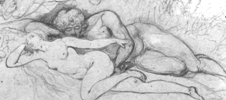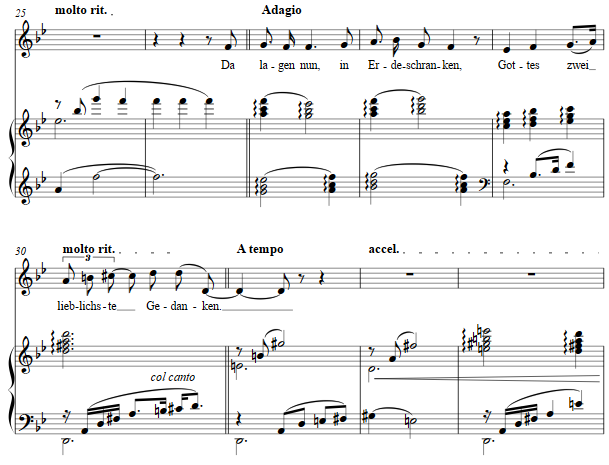Music and Texts of GARY BACHLUND
Vocal Music | Piano | Organ | Chamber Music | Orchestral | Articles and Commentary | Poems and Stories | Miscellany | FAQs
Est is gut - (2019)
Johann Wolfgang Goethe
for baritone and piano
Bei Mondeschein im Paradeis
Fand Jehova im Schlafe tief
Adam versunken, legte leis
Zur Seit' ein Evchen, das auch entschlief.
Da lagen nun, in Erdeschranken,
Gottes zwei lieblichste Gedanken.
»Gut!!!« rief er sich zum Meisterlohn;
Er ging sogar nicht gern davon.
Kein Wunder, daß es uns berückt,
Wenn Auge frisch in Auge blickt,
Als hätten wir's so weit gebracht,
Bei dem zu sein, der uns gedacht.
Und ruft er uns, wohlan, es sei!
Nur, das beding' ich, alle zwei.
Dich halten dieser Arme Schranken,
Liebster von allen Gottesgedanken.
4 pages, circa 3' 00"
The text is found in Goethe's "West-östlicher Divan," Mathal Nameh. Buch der Parabeln.
It is good
In the moonlight of His paradise
Jehovah finds deep in slumber
Adam, and there by him He lies
Eve sleeping, that two they number.
There they are then, embraced by earth,
God's own loveliest of creatures.
"It is good!" He commands life to birth;
Lingering, He savors their features.
No wonder that they captivate,
When eyes gaze into other eyes,
For 'tis the same from mate to mate,
As was for them, and sanctifies.
And God calls us, well, for it must be!
I am fashioned, as one for two.
Enfold another in arms lovingly,
For dear to God are they, me, and you.
rhymed paraphrase of the composer
Copyright © 2019 Gary Bachlund All international rights reserved.

A delicate setting for the work of God plays against type, perhaps, but the imagery of placing "Evchen" -- a little Eve, in the diminutive word form -- at sleeping Adam's side is one of quiet joy, of moonlight and of love. The opening gestures are built on the twelfth, quite as a "quint" might function in an organ registration for the first measure and then at the ninth, a less normal structure yet quite consonant. Thereafter gentle arpeggios and rolled chords color the melodic line singing above.
The four four-line stanzas of the text are treated as an A-B-C-A form, for the commentary on the first stanza's telling the tale takes place across the next stanzas in shifting yet related tonal domains, with a reprise of the opening melody to set the last stanza, with a hushed coda to end the setting.
For other settings of Goethe's texts, click HERE.
The score is available as a free PDF download, though any major commercial performance or recording of the work is prohibited without prior arrangement with the composer. Click on the graphic below for this piano-vocal score.


